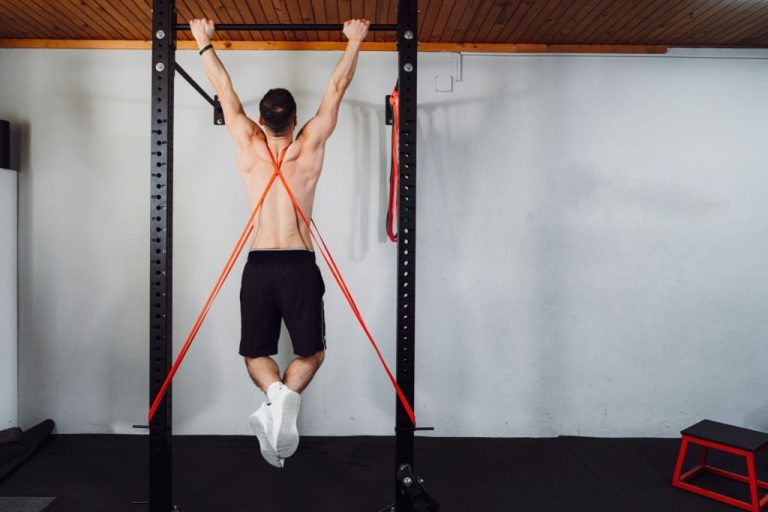Gym Workout Plan for Women to Build Strength

If you want to build strength, incorporating strength training into your routine is essential. Focus on compound exercises like squats and deadlifts to engage multiple muscle groups. Aim for a balanced workout plan that includes cardio and flexibility training, targeting all major muscle groups 3-5 times a week. Don’t forget nutrition and hydration for peak performance and recovery. Stick with it, track your progress, and you’ll see gains in no time—plus, there’s more to explore on getting the best results!
Understanding the Importance of Strength Training for Women

While many women still associate strength training primarily with bodybuilding, it’s crucial to recognize its numerous benefits beyond aesthetics. Strength training not only helps you build muscle but also boosts your metabolism, enhances bone density, and improves overall health. Unfortunately, strength misconceptions often deter women from engaging in this empowering practice. You might fear becoming too bulky or think it’s only for elite athletes, but that couldn’t be further from the truth.
In reality, strength training fosters female empowerment by promoting confidence and resilience. It equips you to tackle daily challenges with ease, both physically and mentally. You’ll also find that lifting weights can alleviate stress and improve your mood, making it a fundamental component of holistic wellness. Prioritizing safety is key; start with lighter weights, focus on form, and seek guidance if needed. Embracing strength training can transform not just your body, but your entire outlook on fitness.
Essential Exercises for Building Strength
When building strength, it’s essential to include both compound movements and isolation exercises in your routine. Compound movements, like squats and deadlifts, work multiple muscle groups at once, giving you more bang for your buck. On the other hand, isolation exercises help target specific muscles, ensuring balanced development and reducing the risk of injury. Incorporating alternatives like the Half-Kneeling Cable Press can further enhance your core engagement and overall strength.
Compound Movements Benefits
Compound movements are essential for building strength because they engage multiple muscle groups simultaneously, allowing you to maximize your workout efficiency. They’re great for full body workouts, helping you save time while enhancing strength and coordination. Plus, they promote better posture and functional fitness, which is vital for daily activities.
Here’s a quick overview of some key compound movements:
| Exercise | Primary Muscles Targeted | Benefits |
|---|---|---|
| Squats | Legs, Core | Strength, stability |
| Deadlifts | Legs, Back | Power, posture |
| Bench Press | Chest, Arms | Upper body strength |
| Pull-Ups | Back, Biceps | Upper body development |
Incorporating these exercises into your routine will not only build strength but also improve overall fitness safely.
Isolation Exercises Importance
In addition to compound movements, isolation exercises play a significant role in building strength and enhancing muscle definition. These exercises focus on specific muscle groups, allowing you to achieve targeted muscle development without overexerting other areas. By incorporating isolation movements, you can enjoy the isolation benefits of improved muscle targeting, which helps in correcting imbalances and preventing injuries.
For example, exercises like bicep curls and tricep extensions allow you to concentrate solely on your arms, ensuring they’re strong and well-defined. Remember, maintaining proper form is essential. Start with lighter weights to master the movements, ensuring your safety as you progress. Ultimately, isolation exercises complement your overall workout routine, helping you achieve balanced strength and a toned physique.
Creating a Balanced Workout Routine

To create a balanced workout routine, it’s essential to incorporate a mix of strength training, cardiovascular exercise, and flexibility work. Aim for a workout frequency of at least three to five times a week, allowing your body to recover adequately between sessions. Strength training should focus on all major muscle groups, promoting muscle balance and preventing injuries.
Include cardiovascular activities like running, cycling, or swimming to boost your heart health and endurance. This exercise variety keeps your routine engaging and effective, reducing the risk of burnout or plateaus.
Don’t forget to add flexibility work, such as yoga or stretching, to enhance your range of motion and decrease muscle tightness. Effective workouts should also include monitoring personal benchmarks over time to assess your progress and make necessary adjustments.
Tips for Progression and Increasing Intensity
As you establish a balanced workout routine, it’s important to think about how to challenge yourself over time. One effective method is through progressive overload, which means gradually increasing the weights, reps, or sets in your workouts. This not only helps build strength but also minimizes the risk of injury by allowing your body to adapt.
Incorporate intensity techniques, such as circuit training or supersets, to elevate your heart rate and keep your workouts engaging. Start slowly; you can add more intensity as you become comfortable with your current routine. Don’t forget to listen to your body—if you feel pain or excessive fatigue, it’s okay to dial back. Aim for a steady progression rather than pushing too hard too quickly. Remember, consistency is key, and safe advancement will lead to lasting strength gains. Additionally, tracking your body composition changes can provide valuable insights into your progress and help motivate you to continue challenging yourself.
Nutrition to Support Strength Goals

While you’re working hard in the gym to reach your strength goals, paying attention to your nutrition is equally essential. Proper nutrition fuels your workouts and aids recovery, helping you build strength safely. Here are four key components to contemplate:
Nutrition is crucial for achieving strength goals, fueling workouts, and aiding recovery for safe muscle building.
- Meal Timing: Aim to eat a balanced meal about 2-3 hours before your workout to energize your body.
- Protein Sources: Include lean proteins like chicken, fish, tofu, or legumes in your meals to support muscle repair and growth.
- Hydration: Drink plenty of water throughout the day, especially before, during, and after your workouts to stay hydrated.
- Healthy Fats: Incorporate sources like avocados, nuts, or olive oil to provide sustained energy levels.
Recovery Strategies for Optimal Performance
Recovery is just as vital as your workout, so don’t underestimate the power of rest days. Proper nutrition and hydration play key roles in helping your body bounce back and perform at its best. Let’s explore how these strategies can enhance your recovery and overall gym performance. Incorporating high-intensity cardio workouts like skipping rope can also aid in faster recovery by improving blood flow and reducing muscle soreness.
Importance of Rest Days
Rest days are essential for maximizing your performance and overall progress in the gym, even if it might feel counterproductive to take a break. Recognizing the rest day benefits can greatly enhance your workout routine. During these days, consider active recovery strategies to keep your body engaged while allowing for healing. Here are four effective ways to incorporate active recovery:
- Gentle Yoga: Stretch and improve flexibility.
- Walking: Enjoy a leisurely stroll to boost circulation.
- Swimming: Engage in low-impact movement that soothes sore muscles.
- Foam Rolling: Release tension and improve muscle recovery.
Nutrition for Recovery
To guarantee your workouts yield the best results, focusing on nutrition is crucial for recovery. After an intense session, your body needs the right fuel to heal and grow stronger. Incorporating post workout snacks rich in protein and healthy carbs can greatly enhance muscle recovery. Think of options like Greek yogurt with fruit or a protein smoothie. These snacks not only replenish energy but also support muscle recovery techniques, helping you bounce back faster for your next workout. Additionally, don’t forget to take into account timing; consuming your snacks within 30 minutes post-exercise maximizes benefits. By paying attention to your nutrition, you’ll promote ideal performance and guarantee you’re on the path to achieving your fitness goals safely.
Hydration Strategies Explained
While you may focus on strength training and nutrition, hydration is equally essential for peak performance and recovery. Keeping your body in fluid balance can enhance your workouts and support your overall health. Here are some hydration tips to take into account:
- Drink water before, during, and after workouts – Start hydrating early to maintain energy levels.
- Choose electrolyte-rich beverages – These can help replenish lost minerals during intense sessions.
- Monitor your urine color – Light yellow means you’re well-hydrated; darker shades signal a need for more fluids.
- Set reminders to drink – Use your phone or a water bottle with measurements to help you stay on track.
Tracking Your Progress and Staying Motivated
Tracking your progress and staying motivated are essential components of any successful gym workout plan for women. Start by setting clear, achievable goals. Whether you want to lift heavier or improve your endurance, specific goals help keep you focused.
Use various tracking methods to monitor your progress. You can keep a workout journal, use fitness apps, or even track your performance in a calendar. Regularly reviewing your achievements not only provides a sense of accomplishment but also helps you identify areas for improvement.
Staying motivated can sometimes be challenging, but remember to celebrate your milestones, no matter how small. Surround yourself with supportive friends or workout partners who encourage you. Ultimately, don’t hesitate to adjust your goals as needed; flexibility is key to maintaining a safe and effective workout routine. By committing to tracking and motivation, you’ll create a sustainable path to building strength and confidence in your fitness journey.
Frequently Asked Questions
Can I Lose Weight While Building Strength Simultaneously?
Yes, you can lose weight while building strength, but it requires a careful balance. You’ll need to maintain a caloric deficit to shed pounds, while also ensuring you get enough nutrients for muscle recovery. Focus on strength training that challenges your muscles, but don’t forget to include adequate rest days. This way, you’ll support your body’s recovery process and avoid burnout, leading to safer and more sustainable results.
How Often Should I Change My Workout Routine?
You should change your workout routine every 4 to 6 weeks to guarantee workout variety and routine adaptation. This helps prevent plateaus and keeps your body challenged. If you’re feeling fatigued or bored, it’s a good sign to mix things up. Just be certain to listen to your body and prioritize safety. Gradual changes can help you stay motivated while minimizing the risk of injury as you progress in your fitness journey.
Is It Necessary to Use Supplements for Strength Training?
Supplements can seem like a quick fix for strength seekers, but they’re not strictly necessary. You can often achieve your goals with whole foods and natural alternatives. Focus on protein-rich meals, like lean meats and legumes, to fuel your workouts. If you do consider supplement types, make sure they’re safe and reputable. Always prioritize proper nutrition and consult a healthcare provider before adding any products to your routine. Your health should always come first!
What Should I Wear to the Gym for Strength Training?
When you’re heading to the gym for strength training, choosing the right gym attire is essential. You’ll want to wear breathable, moisture-wicking fabrics that promote workout comfort, allowing you to move freely. Opt for fitted tops and supportive bottoms that won’t restrict your movements. Don’t forget sturdy footwear with good grip to guarantee safety. Layering is also smart, so you can adjust your outfit based on the gym temperature.
Can I Strength Train During My Menstrual Cycle?
Strength training during your menstrual cycle can be like steering a river with changing currents. You can absolutely train, but listen to your body and adjust as needed. Some women feel strong and energized, while others might experience discomfort. It’s important to prioritize safety; consider lighter weights or modified exercises if you’re feeling off. Remember, each cycle is different, so find what works best for you while staying active during this time.





